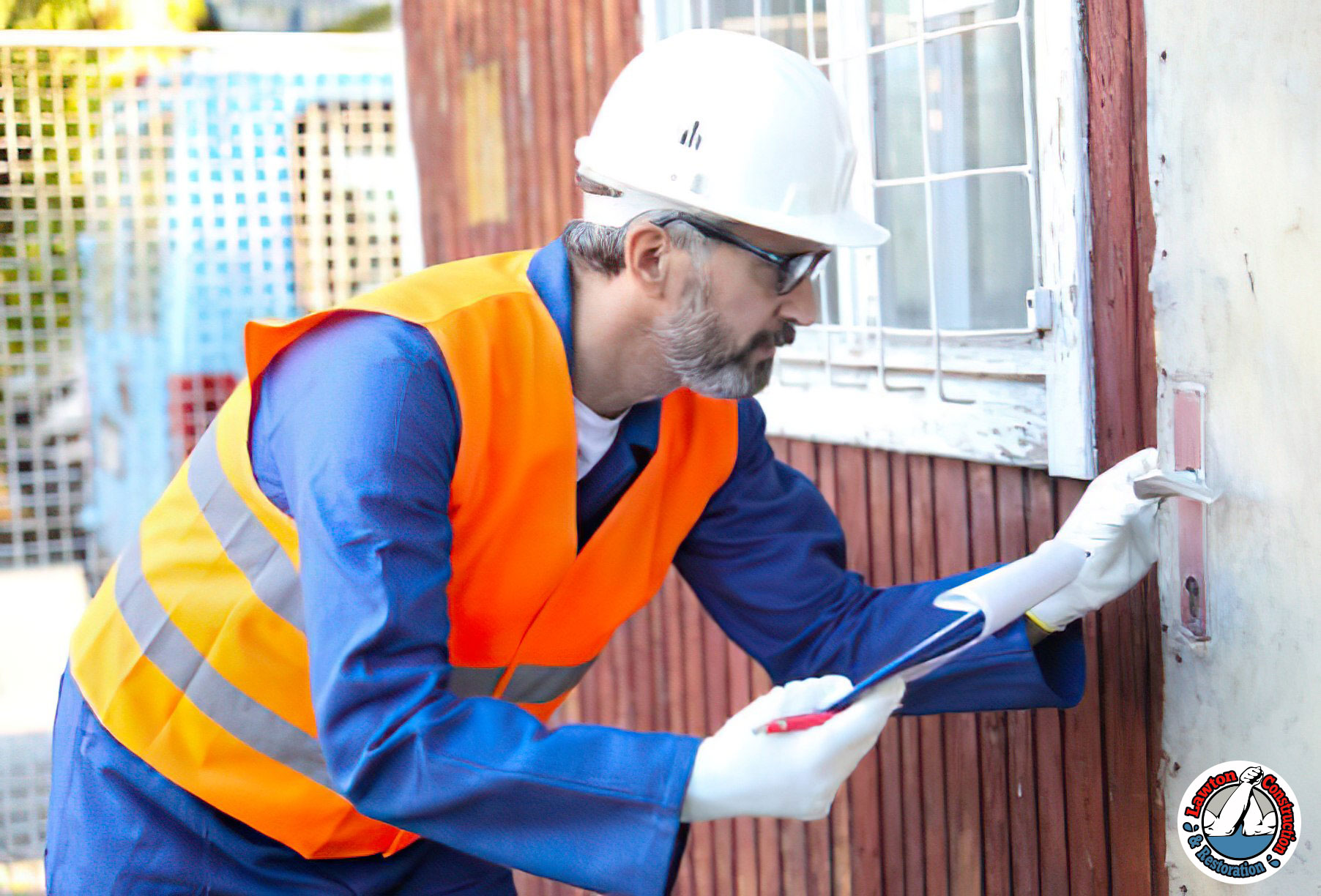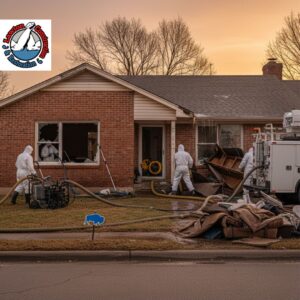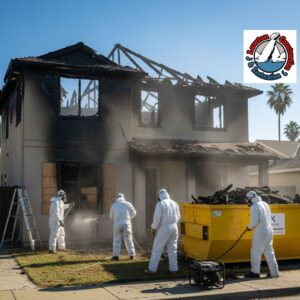Local Lead Removal Experts: Your Trusted Contractors Near You!
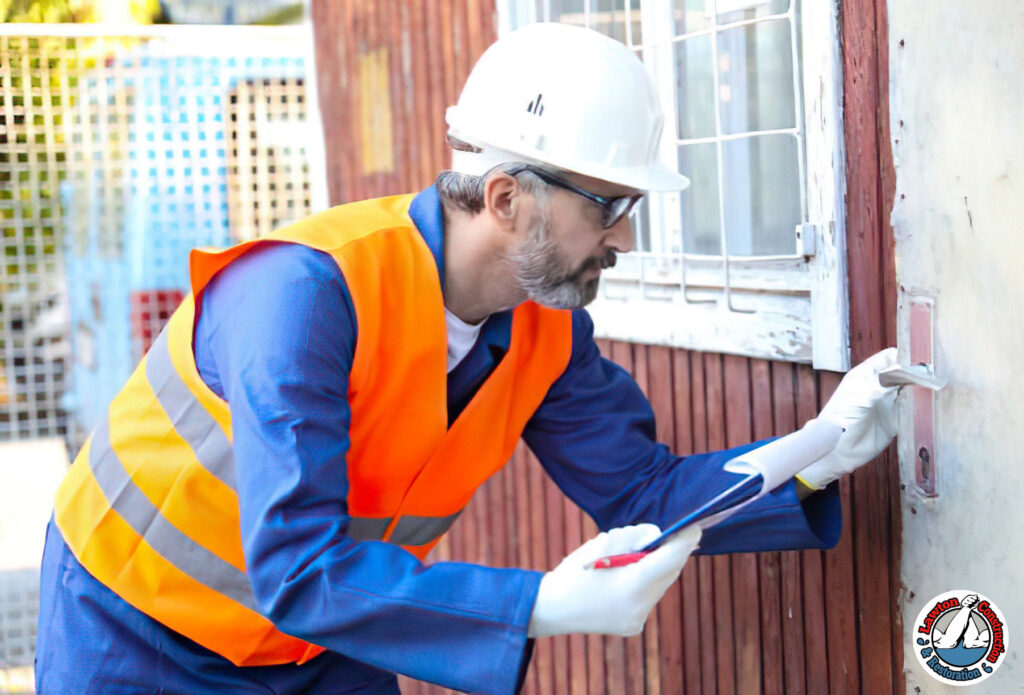
Table of Contents
That’s where local lead removal experts come in. These trusted lead removal contractors don’t just scrape off old paint—they identify, contain, and eliminate hazardous materials in a way that protects both your family and your property. Whether you’re a homeowner concerned about safety or a property manager aiming for compliance, knowing who to trust with lead hazard removal is critical.
In this guide, we’ll walk you through everything you need to know—from how to spot potential lead threats to what makes a contractor truly qualified. You’ll discover how certified lead removal professionals handle the process safely and what to expect in terms of cost, regulations, and long-term prevention. Because when it comes to safeguarding your space, nothing should be left to chance.
Understanding Lead Contamination
Did you know that something as simple as chipping paint could pose a serious health risk to your family? If your home or building was constructed before 1978, there’s a good chance it contains lead-based materials—especially in the paint. While lead contamination isn’t always visible, its effects can be long-lasting and dangerous. But how do you know what to look for, and why is it so important to act quickly?
Let’s break down what lead contamination really means and how it can silently impact your everyday life.

What Is Lead and Why Should You Be Concerned?
Lead is a naturally occurring metal, but when it enters your living environment, it becomes a serious threat. Once widely used in paint, pipes, and building materials, lead has since been banned due to its toxic effects on human health—especially in children.
Exposure to lead, even in small amounts, can cause:
- Developmental delays and learning issues in children
- High blood pressure and kidney damage in adults
- Fertility problems and pregnancy complications
- Behavioral changes and attention deficits
The scary part? You might not even realize you’ve been exposed until symptoms become severe.
Common Sources of Lead in Homes and Buildings
While old paint is the most obvious culprit, it’s far from the only one. Here are some hidden sources that residential lead removal experts often uncover during inspections:
- Peeling or chipping paint on walls, windowsills, doors, and baseboards
- Lead dust created during renovations or from regular wear and tear
- Contaminated soil near the foundation or in gardens
- Old plumbing systems with lead solder or pipes
- Imported toys or ceramics coated with lead-based glazes
Why Lead Exposure Is a Bigger Deal Than You Think
Even minimal contact with lead can lead to significant health problems, especially for children under six. Their developing brains and bodies absorb lead more easily, making early detection and removal a top priority.
That’s why turning to certified lead removal professionals or lead inspection and removal pros is crucial. They have the tools and training to detect the problem, often using techniques the average homeowner wouldn’t have access to.
The Ripple Effect of Neglecting Lead Contamination
Ignoring lead hazards doesn’t just put your health at risk—it can affect your finances, home value, and legal standing. In many areas, landlords and sellers are required by law to disclose and address lead-based risks.
Failing to take action can lead to:
- Expensive remediation down the line
- Legal issues or penalties for non-compliance
- A damaged reputation if you rent or sell property
- Increased healthcare costs due to lead-related illnesses
Lead contamination may be invisible, but its impact is anything but. By understanding the risks and identifying the sources, you’re taking the first step toward a safer, healthier home. In the next section, we’ll help you spot the warning signs that it’s time to call in experienced lead removal contractors—before the situation becomes critical.
Signs You Might Need Lead Removal Services
Have you ever walked past a cracked windowsill or flaking paint and wondered, Is this just old paint—or something more dangerous? If so, you’re not alone. Many homeowners live with potential lead hazards without realizing the risks, often because lead contamination hides in plain sight.
Understanding when to call in trusted lead removal contractors can make all the difference—not just for your property, but for your family’s health and safety.
1. Your Home Was Built Before 1978
This is one of the biggest red flags. Lead-based paint was banned for residential use in 1978, but homes built before then often still have it lurking beneath newer layers. If your house is older and hasn’t been professionally assessed, it’s worth bringing in qualified lead removal services to perform a thorough inspection.
2. You Notice Peeling, Cracking, or Chipping Paint
Lead paint in good condition may pose less immediate risk. But once it starts to break down, it releases toxic dust into your living environment. Key spots to watch include:
- Windows and windowsills
- Doors and door frames
- Baseboards and trim
- Outdoor siding
If these areas are deteriorating, it’s time to consult lead paint removal specialists before the situation worsens.
3. You’re Planning Renovations or Repairs
Disturbing lead paint during construction—even something as small as sanding or drilling—can release hazardous particles into the air. Before you start any major updates in an older home, consider a lead hazard removal services evaluation. Professionals can test the site and recommend safe procedures to avoid contamination.
4. Someone in Your Household Is Showing Symptoms
Lead poisoning isn’t always obvious at first. It can build up slowly in the body, especially in children and pregnant women. Watch for:
- Headaches, fatigue, or irritability
- Developmental delays or learning difficulties in kids
- Digestive problems or loss of appetite
- Unexplained behavioral changes
If you notice any of these and your home has risk factors, a call to residential lead removal experts could provide the answers—and solutions—you need.
5. You’ve Never Had a Lead Inspection
Even if everything looks fine, don’t assume you’re in the clear. A professional assessment from lead inspection and removal pros can reveal issues behind walls, in dust samples, or in your soil and water supply. It’s a simple step that can prevent serious problems down the line.
When in Doubt, Get It Checked
Lead contamination doesn’t announce itself loudly. It’s a quiet intruder—but a harmful one. If your home fits any of the risk profiles above, it’s wise to be proactive. Getting help from experienced lead removal contractors isn’t just about compliance—it’s about peace of mind.
In the next section, we’ll walk you through how the lead removal process works and what you can expect every step of the way.
The Lead Removal Process Explained
So, you’ve discovered a potential lead hazard in your home—or maybe you’re just being proactive. Either way, you’re probably wondering: What actually happens during lead removal? It’s a question we hear often, and it’s one worth answering clearly.

Working with certified lead removal professionals means you’re not just getting a cleanup crew—you’re partnering with trained specialists who follow strict guidelines to ensure your home is safe, compliant, and lead-free.
Let’s walk through what to expect, step by step.
1. Initial Inspection and Risk Assessment
Before anything is removed, the process starts with a detailed inspection. Lead inspection and removal pros will:
- Test painted surfaces, soil, and dust samples
- Use XRF analyzers or lab testing to confirm contamination
- Identify high-risk areas like windows, trim, and doors
- Evaluate the extent and severity of lead presence
This step is crucial in developing a tailored removal plan that fits your home’s unique needs.
2. Choosing the Right Abatement Strategy
Not every lead situation requires full demolition. Depending on the test results, lead abatement experts near you may recommend:
- Encapsulation – sealing lead paint under a durable, specialized coating
- Enclosure – covering surfaces with drywall or paneling
- Removal – stripping or sanding lead paint using safe, approved methods
- Replacement – swapping out contaminated components (like windows or trim)
The goal is always the same: remove or contain the hazard in the safest, most cost-effective way.
3. Containment and Safety Protocols
Safety isn’t optional—it’s the foundation of any lead removal project. Contractors will set up:
- Plastic sheeting and sealed work zones
- Negative air pressure systems to prevent dust spread
- Personal protective equipment (PPE) for all workers
- HEPA vacuum systems to trap microscopic lead particles
These steps help protect your household during the process and ensure no contamination escapes into clean areas.
4. Professional Removal and Cleanup
This is where the heavy lifting happens. Lead paint abatement contractors use specialized tools and follow EPA-approved procedures to:
- Remove hazardous materials safely
- Collect and dispose of contaminated waste properly
- Clean the entire workspace with HEPA-filtered equipment
After the work is done, a secondary cleaning is often performed to guarantee no lead dust remains.
5. Clearance Testing and Final Verification
Once the removal is complete, it’s time for final testing. This ensures your home is safe to reoccupy. Clearance testing involves:
- Wipe sampling of previously contaminated areas
- Air quality tests, if required
- Certification documents verifying lead-safe status
Only when everything passes inspection will your contractor issue official clearance.
Why Professional Help Matters
DIY solutions may seem tempting, but when it comes to lead, shortcuts can put your family at risk. Hiring top-rated lead removal experts ensures:
- Full compliance with local and federal regulations
- Access to advanced testing and containment technology
- Proper documentation if you’re selling, renting, or remodeling
- Peace of mind knowing the job was done right
The lead removal process isn’t just about getting rid of old paint—it’s about reclaiming your peace of mind. In the next section, we’ll explore why working with local lead removal experts has unique advantages you may not have considered.
Why Choose Local Lead Removal Experts
When it comes to something as serious as lead contamination, who you hire matters. But beyond qualifications and certifications, there’s another factor that’s just as important: local expertise. So, why should you trust local lead removal experts over large, out-of-town operations? Let’s explore the unique advantages that come with working close to home.

1. Fast, Responsive Service When You Need It Most
Lead hazards aren’t something you want to wait around to fix. Local contractors are often able to:
- Offer quicker turnaround times
- Respond faster to emergencies or urgent calls
- Schedule site visits with minimal delays
When you’re searching for lead abatement experts near me, you’re not just looking for someone with the right tools—you’re looking for someone who can act fast and keep your project moving.
2. Deep Knowledge of Local Regulations and Housing Conditions
Lead safety rules aren’t always the same from one city or county to the next. Local pros know the ins and outs of your area’s codes, including:
- State and municipal lead paint disclosure laws
- Renovation requirements for historic or older homes
- Local grant or subsidy programs for abatement work
That kind of insider knowledge can save you time, money, and legal headaches.
3. Personalized Service With a Community Connection
Unlike national chains, residential lead removal experts from your area often operate with a community-first mindset. That means:
- One-on-one consultations tailored to your specific concerns
- Greater accountability and transparency
- A genuine investment in your safety and satisfaction
After all, they’re not just contractors—they’re your neighbors.
4. Easier Follow-Up and Long-Term Support
Lead removal isn’t always a one-and-done task. Maybe you’ll need post-abatement testing, periodic inspections, or future renovation support. Working with trusted lead removal contractors nearby means:
- Simple communication for follow-up visits
- Clear documentation that stays within your local network
- A trusted go-to partner for any lead-related questions down the road
It’s the kind of ongoing relationship that’s harder to build with out-of-town providers.
5. Verified Reputation You Can Trust
Let’s face it—online reviews and testimonials mean more when they come from people in your own community. Local contractors build their businesses on word-of-mouth and satisfied clients, so you can:
- Check references from nearby homes or businesses
- See real examples of completed work in your area
- Feel confident you’re choosing qualified lead removal services with proven results
Choosing a local lead removal expert isn’t just convenient—it’s smart, strategic, and often safer. They understand the unique challenges of your region and deliver solutions designed specifically for the homes and buildings in your neighborhood.
In the next section, we’ll show you exactly what to look for in a lead removal contractor so you can hire with confidence.
What to Look for in a Trusted Lead Removal Contractor
Hiring a lead removal contractor isn’t just about checking a box—it’s about protecting your home, your health, and your peace of mind. But with so many options out there, how do you know who to trust? If you’ve ever typed “who are the best lead removal experts near me?” into a search engine, you’re not alone.
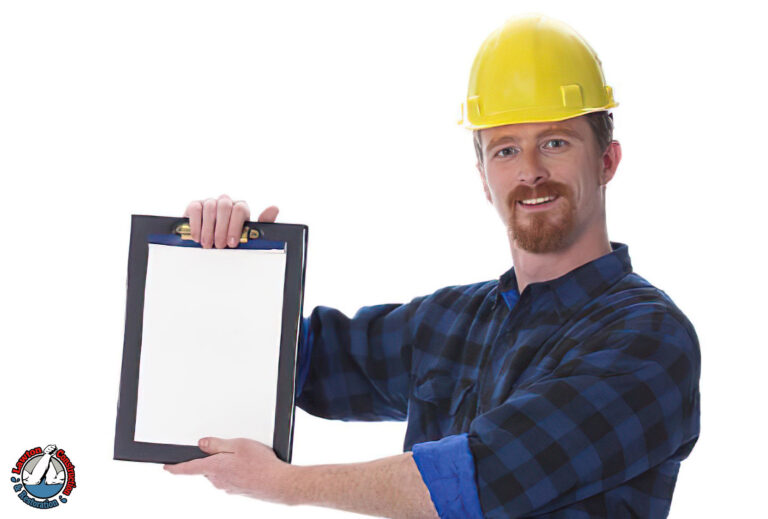
Let’s break down exactly what to look for when hiring experienced lead removal contractors, so you can feel confident you’re making the right choice.
1. Proper Licensing and Certifications
This is non-negotiable. Lead removal is regulated for a reason—improper handling can make contamination worse. Look for contractors who are:
- EPA-certified under the Renovation, Repair and Painting (RRP) Rule
- Licensed by your state or local health department
- Qualified to provide both lead inspection and removal services
These credentials ensure the contractor uses safe lead paint remediation techniques backed by science, not shortcuts.
2. Proven Track Record and Strong Reputation
Experience matters. You want a contractor who has successfully handled cases similar to yours. Look for:
- Before-and-after project photos
- Positive reviews on Google, Yelp, or local directories
- Testimonials from homeowners, landlords, or commercial clients
- References you can actually call
Choosing top-rated lead removal experts gives you peace of mind that you’re working with a company that delivers results.
3. Transparent Pricing and Detailed Estimates
Nobody likes surprise fees—especially when health and safety are on the line. A reputable contractor will:
- Offer a written estimate that clearly outlines the scope of work
- Provide a breakdown of labor, materials, testing, and disposal
- Answer your questions about cost, like how much does lead paint removal cost per square foot?
Honesty upfront means fewer headaches later.
4. Up-to-Date Equipment and Industry Best Practices
The best contractors invest in professional-grade tools and follow industry protocols. Ask whether they use:
- HEPA-filtered vacuums and air scrubbers
- Containment systems for dust and debris
- EPA-approved methods for lead paint stabilization or removal
- Clean-up and clearance testing as part of their final process
This level of care separates qualified lead removal services from contractors who cut corners.
5. Strong Communication and Customer Service
A contractor should make you feel informed and respected every step of the way. During your initial conversations, pay attention to how they:
- Answer your questions clearly and confidently
- Provide timelines and stick to them
- Follow up promptly on calls or emails
- Explain the process in a way that makes sense to you
Great customer service is often the best indicator of great work.
Choosing the right lead removal contractor isn’t just a technical decision—it’s a personal one. The team you hire will be in your home, working to eliminate hidden dangers. You deserve someone who is skilled, transparent, and genuinely committed to your safety.
In the final section, we’ll cover how to protect your home long-term—even after the lead is gone—so you can live worry-free for years to come.
How to Keep Your Home Lead-Safe for the Long Haul
You’ve tackled the hard part—hiring certified professionals, undergoing lead abatement, and restoring peace of mind. But here’s the thing: staying lead-safe isn’t a one-time event. It’s an ongoing commitment to prevention, maintenance, and awareness. So, what can you do to protect your home and loved ones moving forward?

Here’s your practical, proactive game plan to keep your space lead-free—long after the pros pack up.
1. Schedule Regular Lead Inspections
Even after a successful remediation, it’s wise to monitor your home over time—especially if it was built before 1978. Reach out to lead inspection and removal pros for:
- Annual or bi-annual assessments
- Dust wipe testing in high-traffic areas
- Re-inspections after renovations or weather-related damage
Regular testing ensures that lead encapsulation services or stabilization efforts are holding up.
2. Monitor Paint Conditions Closely
Chipped or peeling paint can reintroduce risk—especially in older homes. Do routine checks in areas like:
- Window frames and sills
- Baseboards and trim
- Outdoor siding and porches
- Ceilings and doorways
If you spot deterioration, act quickly. Catching it early can prevent costly repairs or the need for full lead paint abatement later on.
3. Clean Smart, Not Just Often
Dust is the primary vehicle for lead exposure—especially for young children. Keep your home clean using techniques recommended by residential lead removal experts:
- Wet mopping and damp dusting (avoid dry sweeping!)
- HEPA vacuuming instead of standard vacuums
- Washing children’s toys and hands frequently
Keeping surfaces free of dust reduces the chances of lead particles circulating in your air and settling on surfaces.
4. Be Careful with DIY Repairs and Renovations
It’s tempting to take the DIY route—but when it comes to lead, one wrong move can spread contamination. If you’re planning to drill, sand, or paint:
- Have surfaces tested beforehand
- Avoid disturbing painted areas unless you’re trained
- Hire qualified lead removal services for any major work
Even minor updates like replacing windows or scraping trim can stir up danger if not handled correctly.
5. Educate Your Household
Knowledge is one of your most powerful tools. Make sure everyone in your home—family members, tenants, even guests—understands:
- Where the highest-risk areas are
- Why it’s important to avoid tampering with certain surfaces
- Who to call if they see damage or have concerns
The more awareness you build, the safer your environment stays.
6. Partner with Trusted Experts for Ongoing Support
Lead safety is a journey, not a destination. Whether it’s for regular checks, emergency consultations, or advice on maintenance, having trusted lead removal contractors in your corner makes all the difference.
Build a relationship with a local pro who:
- Understands your home’s history
- Offers consistent follow-up services
- Is available when new questions or issues arise
Lead may be silent—but with the right strategy, it doesn’t stand a chance. Staying vigilant, maintaining surfaces, and leaning on expert guidance ensures that your home stays the safe haven it was meant to be.
In our final wrap-up, we’ll leave you with key takeaways and the next best steps to securing a lead-free future for you and your family.
Wrapping Up: Your Next Steps Toward a Lead-Safe Home
Now that you’ve explored the ins and outs of working with local lead removal experts and understand the importance of professional lead abatement, you might be wondering—What’s the best move for my home? or How do I ensure lasting safety for my family?

These are questions worth asking because lead hazards aren’t something to take lightly. Whether you’re facing peeling paint, planning renovations, or simply want peace of mind, reaching out to certified lead removal professionals is a smart investment in your health and property value.
Remember, choosing trusted lead removal contractors near you means quicker response times, personalized service, and deep knowledge of local regulations—advantages that truly make a difference. And by following proven maintenance tips and scheduling regular inspections, you’ll keep your home protected for years to come.
So, why wait? If you’ve been asking yourself “Do I need a lead removal expert for my home?” or “Who are the best lead removal experts near me?”, now’s the time to take action. Contact a qualified team today, and take the first step toward a safer, healthier living environment.
